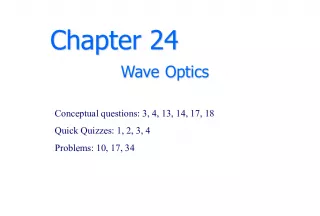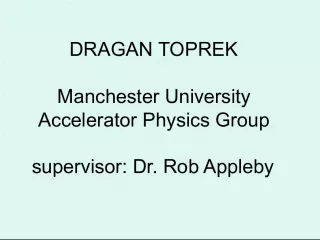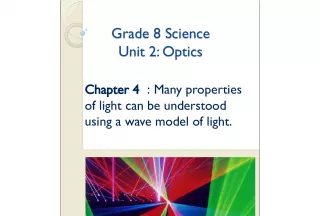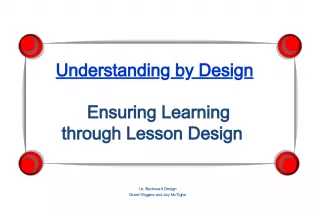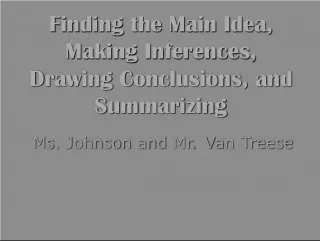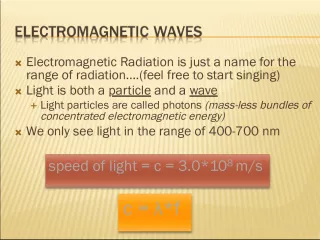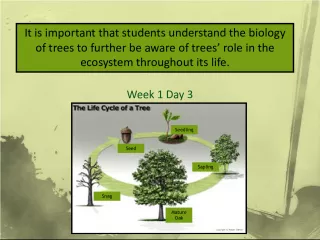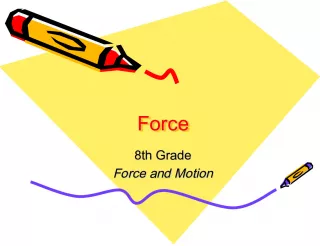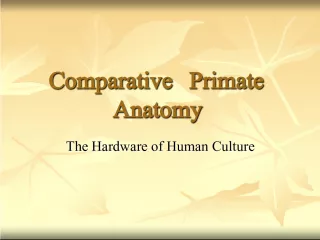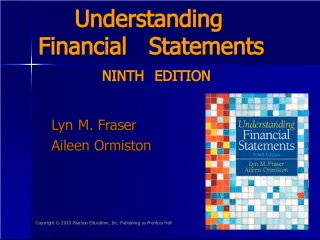Understanding Lenses in Optics


This Grade Science Unit on Optics focuses on the chapter of Lenses, which explains how lenses refract light to form images. Lenses are curved pieces of transparent material, usually made from glass
- Uploaded on | 1 Views
-
 katiecoleman
katiecoleman
About Understanding Lenses in Optics
PowerPoint presentation about 'Understanding Lenses in Optics'. This presentation describes the topic on This Grade Science Unit on Optics focuses on the chapter of Lenses, which explains how lenses refract light to form images. Lenses are curved pieces of transparent material, usually made from glass. The key topics included in this slideshow are . Download this presentation absolutely free.
Presentation Transcript
Slide1Grade 8 Science Unit 2: Optics Grade 8 Science Unit 2: Optics Chapter 6 : Lenses refract light to form images.
Slide2LensesLenses A curved piece of transparent material that refracts light in a predictable way. Usually made from glass or plastic.
Slide3Lenses
Slide4There are two types oflenses: 1. Convex Centre of the lens bulges out Causes light rays to bend toward each other ( converge )
Slide52. Concave Centre of the lens is curved in Causes light rays to bend away from each other ( diverge )
Slide6Convex vs. Concave Lenses
Slide7Convex Lenses Convex Lenses Can act as a magnifying glass Each lens has its own focal length ( the distance from the centre of the lens to the focal point )
Slide8The greater the curvature of the lens, the shorter the focal length. ( pg. 217 )
Slide9Lenses have focal points on either side because light shines through either side. The line through the centre of the lens is called the principle axis . Optical centre is where the principle axis meets the lens centre.
Slide10PrincipleAxis Optical Centre
Slide11Concave Lenses Concave Lenses To find the focal point, you must extend the refracted rays back.
Slide12Lenses with the greater curvature have the shortest focal length. ( pg. 221 )
Slide13Corrective Lenses Corrective Lenses The Eye (pg. 229)
Slide14Vision
Slide15Near-sighted Vision Near-sighted Vision See objects up close but not at a distance. Concave lenses are used to correct this vision.
Slide16Near- sighted Vision
Slide17Far-sighted Vision Far-sighted Vision See objects at a distance but not up close. Convex lenses are used to correct this vision.
Slide18Far-sighted Vision
Slide19Determining Focal Length...You must include the following incident rays: 1. Travelling parallel to the p.a. 2. Travelling through the o.c. 3. Travelling through the F.
Slide20Ray Diagrams: Convex Lenses Ray Diagrams: Convex Lenses Object between the lens and focal point.
Slide21Object is between the focalpoint and 2X the focal length.
Slide22Object is more than 2X thefocal length.
Slide23Ray Diagrams: Concave Lenses Ray Diagrams: Concave Lenses The above is true for an object in all positions.
Slide24CORESTSE: “Fibre Optics” Fibre Cable
Slide25Optical Technologies... Optical Technologies... 1. Microscopes Uses two convex lenses with relatively short focal points to magnify Magnified twice to increase enlargement
Slide26The Microscope
Slide272. Telescopes The objective lens has a longer focal length than the microscope. Can have either a refracting or reflecting telescope
Slide28Refracting Telescope (pg. 245) Refracting Telescope (pg. 245) The lenses bend light to focus it. The objective lens must be as large as possible to view distant galaxies (makes it heavy)
Slide29Reflecting Telescope (pg. 246) Reflecting Telescope (pg. 246) Uses a concave mirror, plane mirror and a convex lens to collect and focus light from objects at a great distance. Most large telescopes are this type.
Slide30The Hubble Space TelescopeLaunched in 1990
Slide31The ReflectingTelescope
Slide323. Cameras (pg. 248)4. Binoculars (pg. 247) 5. Face shields 6. Magnifying glasses 7. Contact lenses 8. Flashlights 9. Eye glasses
Slide33The Nature of Science The Nature of Science The development of new technologies involve many individuals and groups of people. These technologies can alter what we know about the nature of science.
Slide3416021672 Individuals... Galileo Newton
Slide35Groups...
